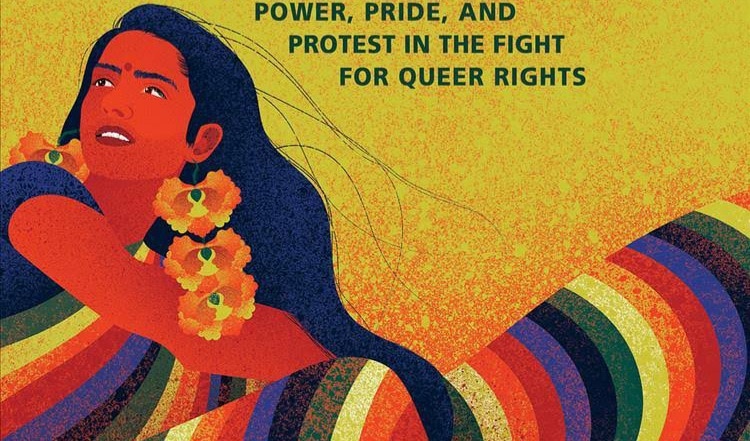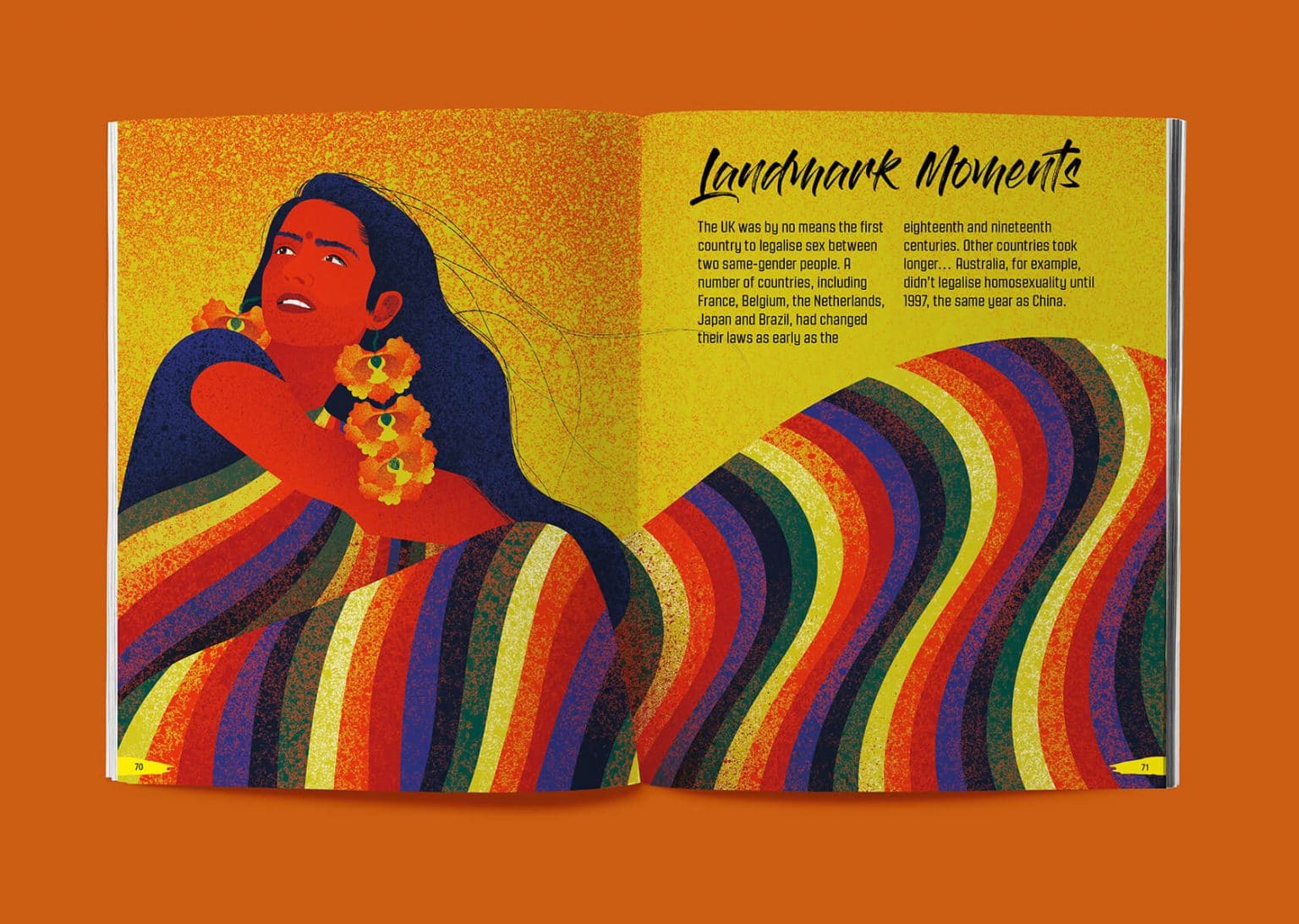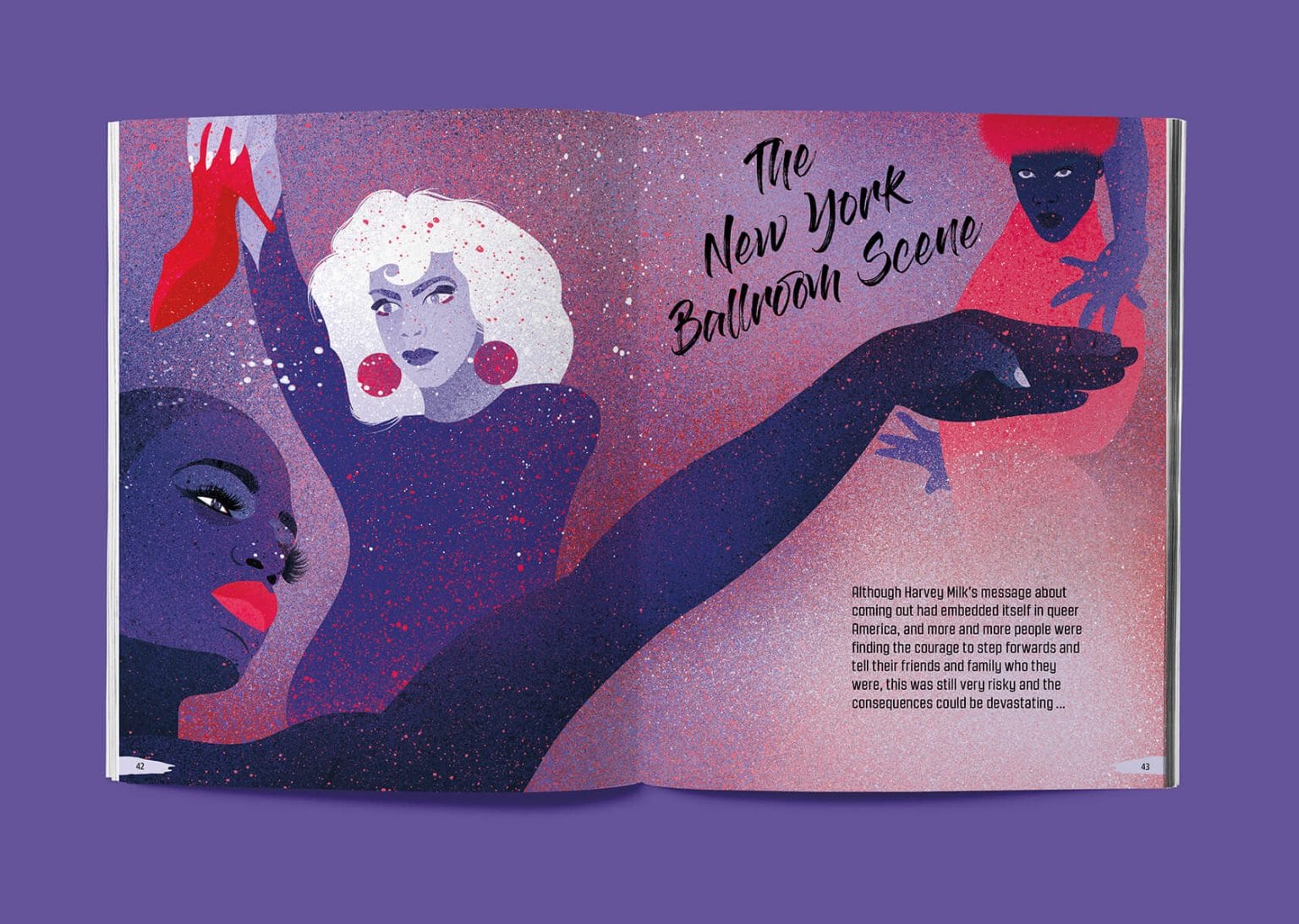
Rainbow Revolutions takes us on a colourful and informative ride through LGBTQ+ history
On May 24, 1988, the British government enacted a law known as Section 28 that made speaking, writing or promoting homosexuality in schools illegal across England, Scotland and Wales. As a result, schools were not permitted to provide support or education to LGBTQ+ students in their schools, and were not permitted to speak positively about homosexuality.
During this time in Britain, books like Rainbow Revolutions – Power, Pride, and Protest in the Fight for Queer Rights were not allowed to exist for the people who needed this information the most — the young, queer people who deserve to know their history, and deserve to be proud of who they are just like anyone else.
The book is beautifully illustrated by pop artist Eve Lloyd Knight, while author Dr. Jamie Lawson provides us with a very eloquent, enjoyable and informative timeline of LGBTQ+ history.
Though the book is clearly illustrated and written for younger readers, I don’t believe it is merely just a children’s book. As a queer adult in my 30s, there were many things about my own history that I never knew before picking up a copy of Rainbow Revolutions. This book is definitely meant for anyone looking to learn a bit more about LGBTQ+ history and culture.

Beginning with the Stonewall Riots on June 28, 1968, Rainbow Revolutions appropriately salutes Marsha P. Johnson and Sylvia Rivera — the two trans women of color at the forefront of the protest. From then, it takes the reader even further back than the riots, highlighting the pervasive anti-queerness at the heart of early European culture, and how this anti-queerness spread to other parts of the world through colonization.
The book then takes us through the rise of Nazi power in Germany, and the post-war world in which queer people found it increasingly more difficult to live freely. Groups such as The Daughters of Bilitis — the first civil rights organization for queer women, and The Mattachine Society — a gay men’s rights organization, were formed. The Mattachine Society went on to form the first “sip-in” to protest the mistreatment of queer people in New York City bars.
The book goes on to highlight many prominent figures in queer history, such as writer and activist Audre Lorde and activist and politician Harvey Milk, before taking us through the height of the HIV/AIDS crisis in the 80s and 90s and the formation of the New York ballroom scene.
I particularly appreciate that the author of the book makes sure to recognize the many women and people of colour who were trailblazers in the LGBTQ+ movement. The contributions of women and people of colour are sometimes overlooked in the community, and it was very refreshing to see them represented and fully embraced here.

I was also impressed with how the book manages to paint a very in-depth and extensive picture of queer history — where we started, where we’ve been, where we are now and what we have left to accomplish — all in under 100 pages.
Well-researched and comprehensively written, the book covers every aspect of the LGBTQ+ movement — taking us through the high and lows of each historic moment and introducing us to the queer artists, activists and leaders that paved the way.
Every library and classroom should have Rainbow Revolutions on their shelves, every parent should have a copy of it in their homes, and every child and adult should have access to this beautifully written piece of LGBTQ+ history. It’s more than just another colourful book to add to your collection. It’s a revolution.







